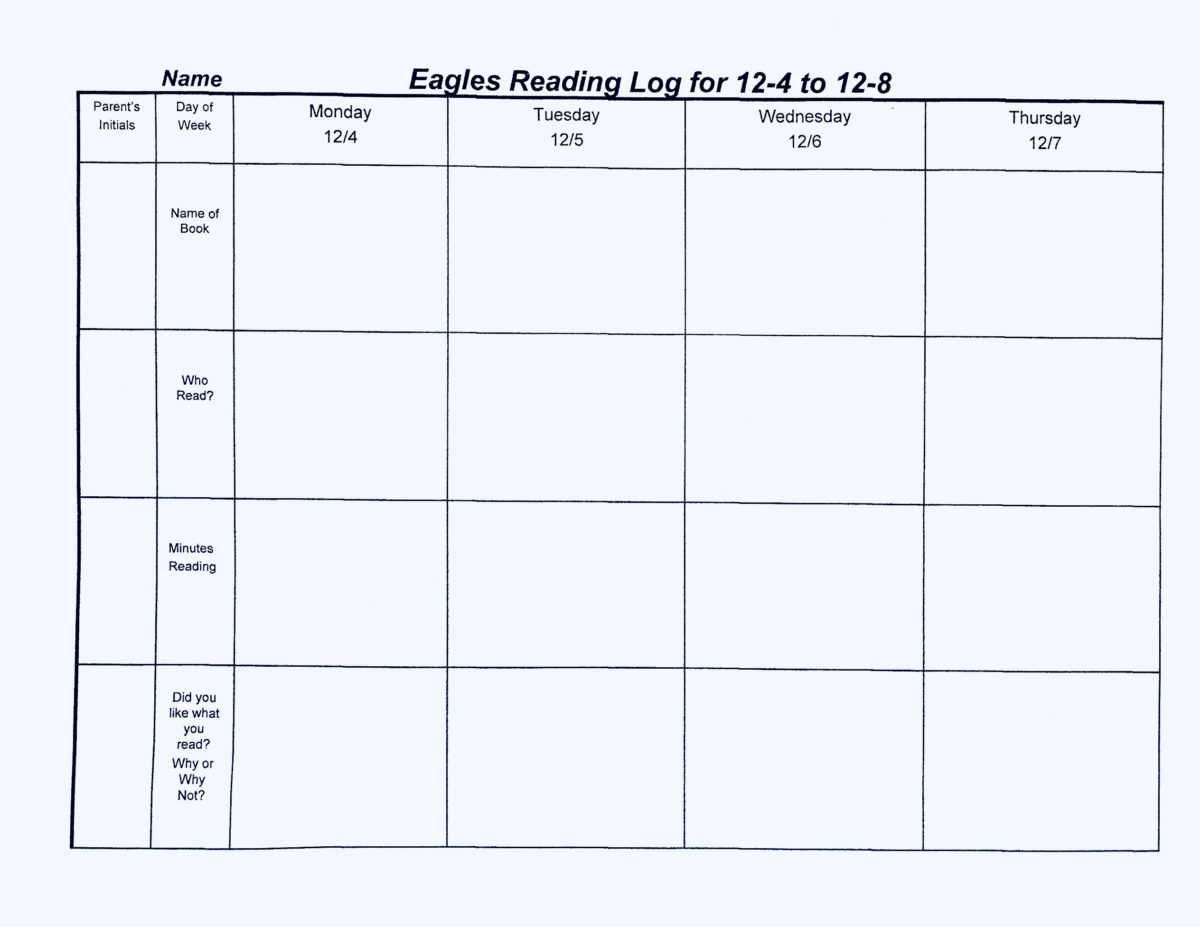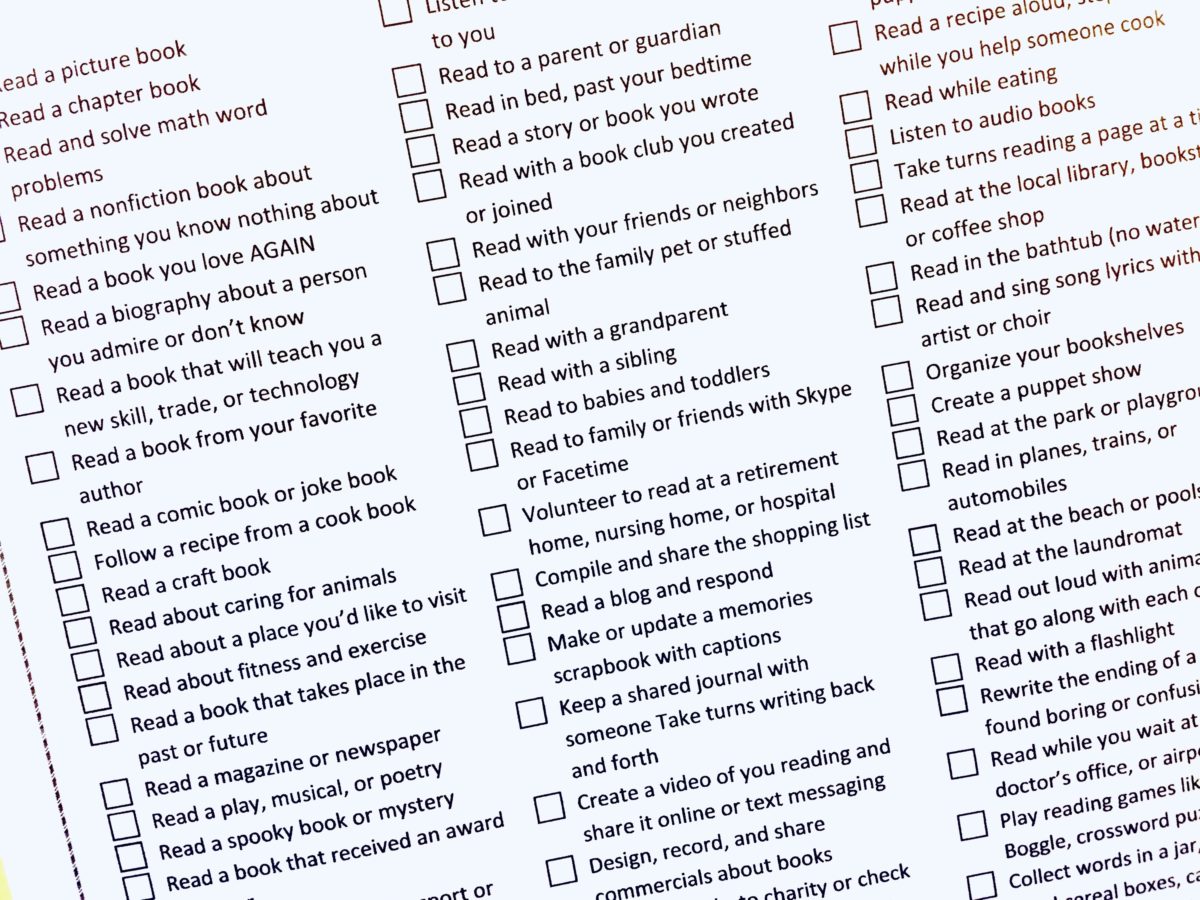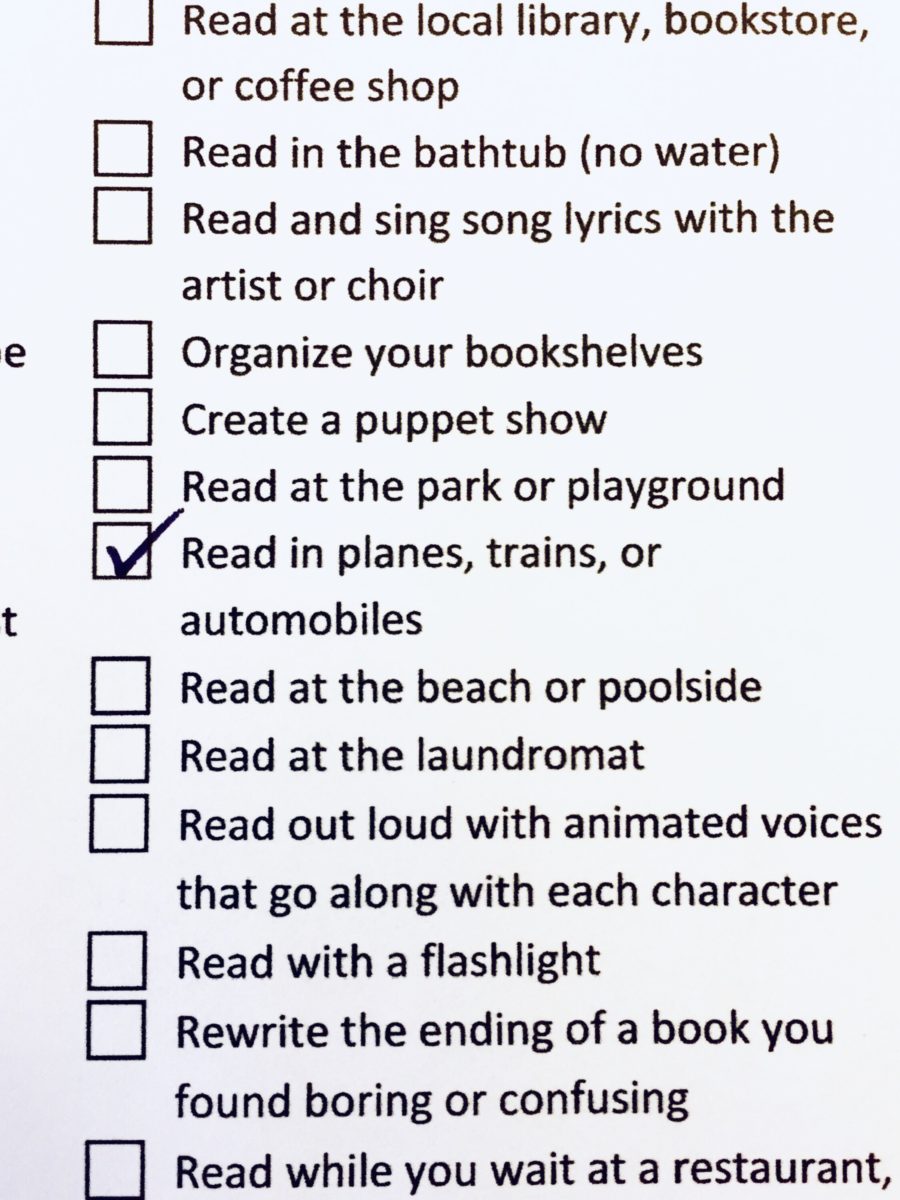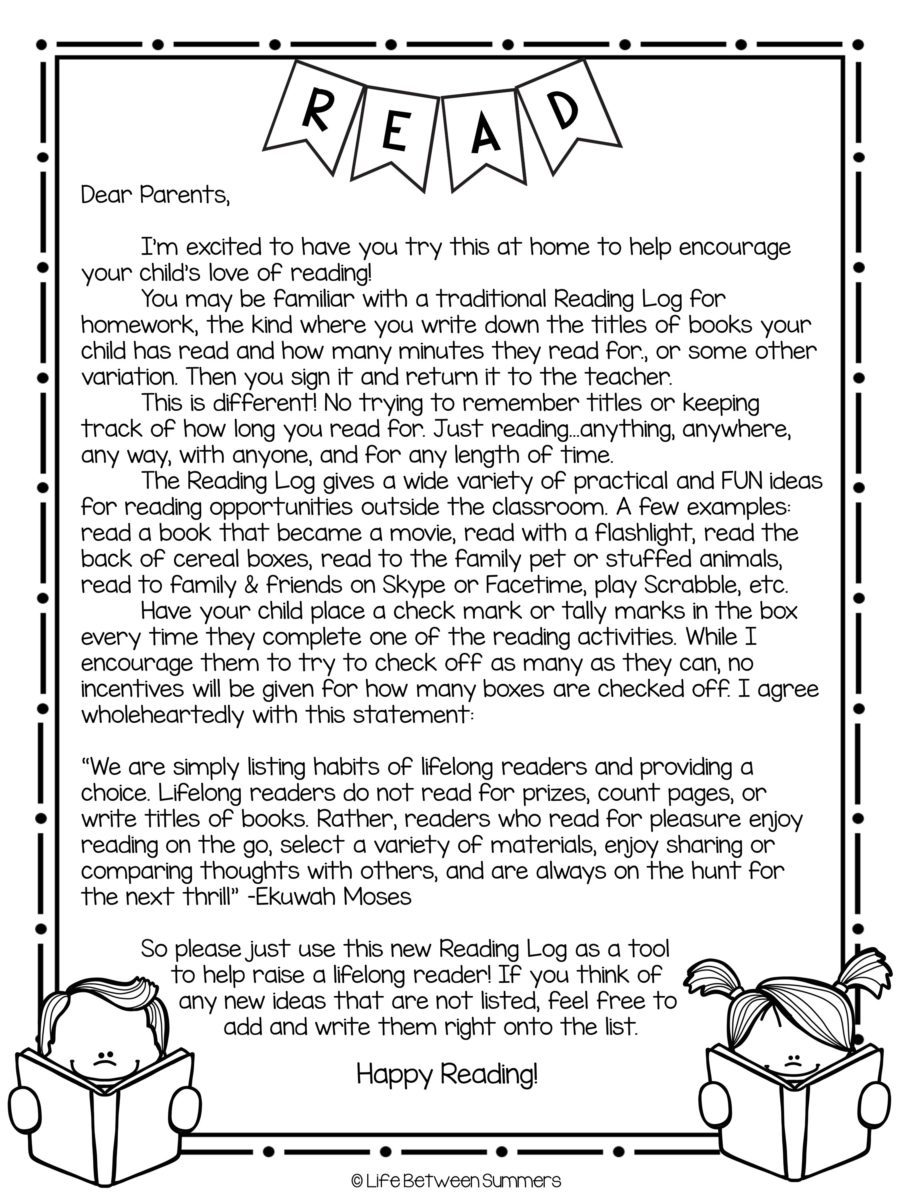Hopefully you’ll love this idea as much as I do! I wish I could take credit for thinking of it myself. A colleague shared an article about it on a district collaboration board and I was really glad I decided to click on it.
I’ll share a link to the article at the end of my post, but for now I’ll just fill you in.
What grabbed my attention in the title of the article was “Unique Reading Log.” It caught my eye because my three-year-old currently has a reading log as part of her homework in preschool. Yes, you heard that right. My THREE year old has homework. Man, starting ‘em young!
Here’s what her Reading Log looks like:
Like many reading logs, it requires writing down book titles and how many minutes were read for each day of the week. This particular one also asks who the child read with and to answer the question “Did you like what you read? Why or why not?”
I completely understand the good intentions of her wonderful teacher to promote accountability and encourage reading at home. I’m being honest when I say that my daughter and I read together on a daily basis and enjoy it, but I’d be lying if I said that I enjoy trying to remember the titles of Daniel Tiger books as I fill out all twenty (yes, count ’em…twenty) of those boxes.
Speaking as a teacher instead of a parent now, I haven’t assigned a Reading Log for homework in many years. I know there are many different kinds and you may even use one in your class that is very effective, but I personally haven’t found one that I thought was meaningful for my own students.
Until now [cue trumpets]!! This alternative Reading Log lists a wide variety of practical and worthwhile ideas for reading opportunities outside the classroom. I don’t usually care to make political references, but I just feel like this reading log helps “Make Reading Fun Again.” Here is a small sample of activities it has to choose from:
One of the choices that’s listed is “Read in Planes, Trains, or Automobiles.” My girls enjoyed doing that one on our trip to Seattle:
So if this were my daughter’s reading log, we would then get to place a check mark or tally marks in the box:
And THAT’S IT. This reading log doesn’t require any busy work on the part of students (or parents)! It only requires reading…anything, anywhere, any way, with anyone, and for any length of time.
You could manage this a number of ways, but here’s just a suggestion. While I would encourage my students to try to check off a variety of different boxes, I wouldn’t plan on giving them any awards or incentives for how many boxes they’ve checked off.
The former teacher and literacy specialist who created this Reading Log, Ekuwah Moses, was quoted in the article:
“We are simply listing habits of lifelong readers and providing a choice. Lifelong readers do not read for prizes, count pages, or write titles of books. Rather, readers who read for pleasure enjoy reading on the go, select a variety of materials, enjoy sharing or comparing thoughts with others, and are always on the hunt for the next thrill.”
Amen, sister!
I created this Parent Letter to send home with families. It tells how the Reading Log works, and it also explains the reasoning behind it so that they can get on board with helping to raise a lifelong reader.
How often you would distribute a new copy of the Reading Log (i.e., weekly, monthly) and whether or not you’d choose to collect it from students on a regular basis would be up to you! Do what works for you and your class.
Now the best part…it’s for FREE!
Click here for a copy of Ekuwah Moses’ Reading Log (scroll all the way to the bottom of her blog post for the PDF). You can also click here to grab my Parent Letter.
And if you’d like to read another parent’s take on all of this, here is the article that inspired me (it’s from one of my favorite parenting websites, Scary Mommy).
Happy Reading!







What a great idea! It’s like a reading challenge, but instead of WHAT they should read, it’s about HOW they should read. Very cool 🙂
Yes, I love the idea of giving kids choice! It gets them much more excited about reading.
We use a reading log too! It is just your standard everyday log, but I really like this check list log. Anything to keep students engaged and wanting to read is a win win! Thanks for sharing these ideas!
Jamie
Teaching Tidbits and More with Jamie
Absolutely! I’m on board with any resource that can help keep them engaged and wanting to read!
What a great way to promote the joy of reading!
Thanks Brooke! That’s what I love most about this reading log, that it does promote the joy of reading!
I’m always looking for a more efficient yet effective way to track reading. Thanks for this fabulous idea!
Great to hear. I’m so glad you find it to be efficient and effective!
This is so great! Love the checklist and love your parent letter! Well done!
Thank you, Jason! I greatly appreciate the feedback!
Love this idea! Grabbed the freebie reading log. Thanks
You’re very welcome! I hope that your parents and students love it!
This is a FANTASTIC idea! Reading logs are a pain. I have tried an electronic one this year, but things are not much better than they were with traditional paper ones.
I’ve never had any luck with them either! I hope that this one works out well for you and your students if you decide to give it a try!
Thank you! I will let you know.
This is a really wonderful idea and I feel my students, and parents, would respond well! It gives some really great suggestions and puts the fun back in reading! Thank you so much for sharing these ideas!
Thanks Elena! I hope that your students and parents do respond well to it, I have a feeling that they will!
This is an awesome idea! Thanks for sharing!
Any time! Thank you for your feedback!
This is a really cool idea! Ill have to give this a try next year!
Definitely! I hope that it works out great for your next year’s class!
I love this so much! Thanks for posting this! I can see my students getting excited to challenge themselves to read in new places. I can also see my own children getting excited to read in new places! ????
This makes me so happy to hear! I hope your students and your own kids love the challenge!
This is a much better way to foster love of reading… incorporating it into everyday life!!! Thanks for sharing!!
Yes, I feel that this is the primary goal of the reading log- to foster a love of reading. You’re very welcome, thanks for your feedback!
This is so fantastic!!! What a great, authentic way to create lifelong readers! I love this post and thank you so much for the freebie!!!
Absolutely! You’re very welcome and I hope that your students and parents love it too!
I love this! I’m going to use the printable with my son whom I’m homeschooling! I wish I had this when I was a teaching in the ELA classroom. Of course, my issue was that if I didn’t assign a reading log, my students wouldn’t read a home – the parents begged for it because their kids weren’t reading! Sad.
I’m so happy to hear that you’ll be using it with your son at home! I hope that he finds it to be motivating and enjoyable.
This is amazing! I would love if my kids’ teachers would do something like this! Thank you for sharing.
Thank you! Absolutely, I’m always happy to share ideas!